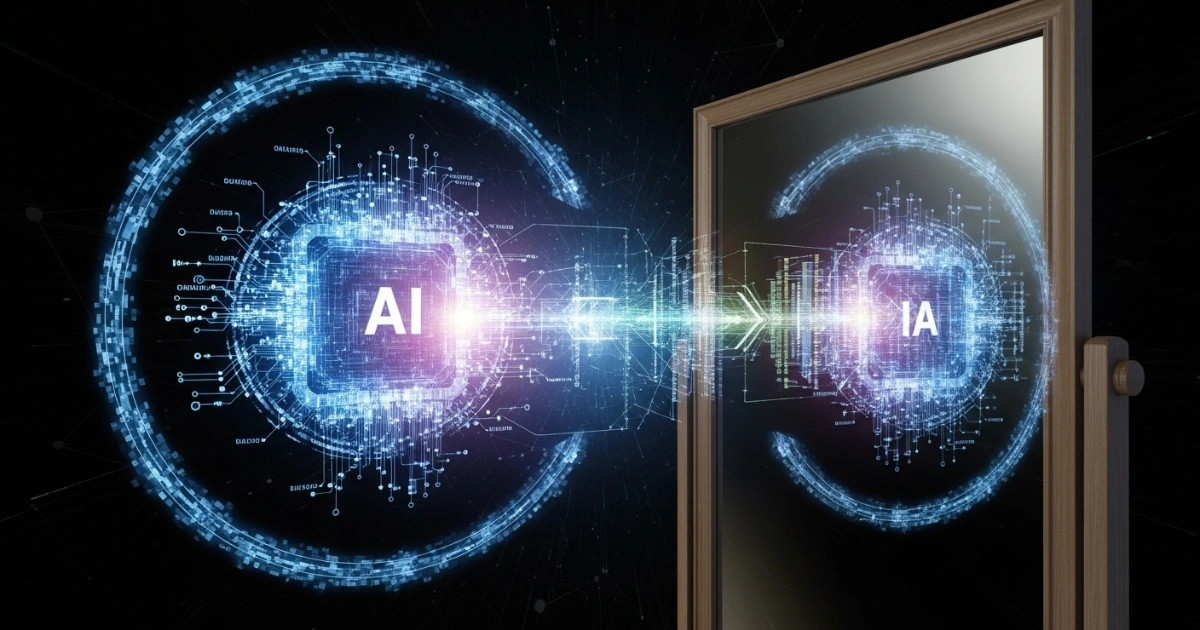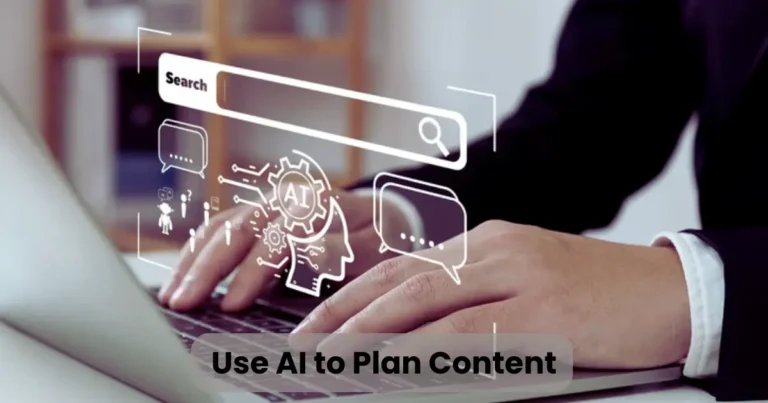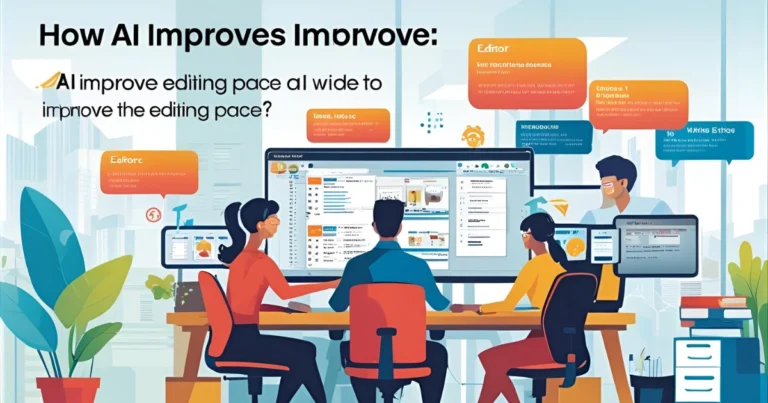AI and the Mirror Feedback Loop: Boosting Growth

Contents
In today’s fast-evolving digital landscape, understanding how AI supports the mirror feedback loop is crucial for businesses, educators, and individuals aiming to maximize growth and efficiency. The mirror feedback loop, a concept rooted in reflective learning and iterative improvement, allows systems and individuals to assess performance, identify gaps, and refine processes through continuous feedback. Artificial intelligence (AI) enhances this process by providing real-time, data-driven insights, enabling precise adjustments and fostering rapid development. This article explores how AI revolutionizes the mirror feedback loop, offering practical applications, benefits, and future implications across various sectors.
What Is the Mirror Feedback Loop?
The mirror feedback loop is a cyclical process where individuals or systems reflect on their actions, receive feedback, and use that information to improve future outcomes. Imagine a mirror reflecting your image back to you—it shows you exactly what’s happening, allowing you to adjust accordingly. In practice, this loop involves four key stages:
- Action: Performing a task or process.
- Observation: Collecting data or feedback on the action.
- Analysis: Evaluating the feedback to identify strengths and weaknesses.
- Adjustment: Implementing changes based on the analysis to improve the next action.
This iterative process drives continuous improvement, whether in personal development, business operations, or technological systems. However, traditional feedback loops often rely on manual data collection and subjective analysis, which can be slow and error-prone. This is where AI steps in, transforming the process into a dynamic, efficient, and scalable system.
How AI Enhances the Mirror Feedback Loop
AI supports the mirror feedback loop by automating and optimizing each stage of the process. By leveraging advanced algorithms, machine learning, and data analytics, AI delivers precise, actionable insights at unprecedented speeds. Below, we explore how AI contributes to each stage of the loop, ensuring maximum efficiency and impact.

1. Action: AI-Powered Execution
AI streamlines the initial action phase by enabling smarter decision-making and execution. For instance, in business, AI-driven tools like chatbots or recommendation systems perform tasks such as customer service or product suggestions with high accuracy. These systems generate data from their actions, creating a foundation for the feedback loop. By automating repetitive tasks, AI ensures that actions are consistent, measurable, and aligned with predefined goals, setting the stage for effective feedback.
Moreover, AI can simulate actions in controlled environments, such as virtual training platforms, allowing users to practice skills and generate data without real-world consequences. This capability is particularly valuable in fields like healthcare, where AI-powered simulations help medical professionals refine techniques before applying them to patients.
2. Observation: Real-Time Data Collection
The observation phase relies on gathering accurate and comprehensive data. AI excels here by collecting vast amounts of information in real time, eliminating the delays associated with manual methods. For example, AI-powered analytics platforms can track user behavior on websites, monitor employee performance in workplaces, or assess student progress in educational settings.
AI tools like sensors, IoT devices, and natural language processing (NLP) systems capture nuanced data points, such as sentiment, tone, or physical metrics. This granular data collection ensures that the feedback loop is built on a robust and reliable dataset, enabling deeper insights during the analysis phase.
3. Analysis: Deep Insights Through AI
Once data is collected, AI’s analytical capabilities shine. Machine learning algorithms can process complex datasets, identify patterns, and uncover insights that might be invisible to human analysts. For instance, in marketing, AI can analyze customer feedback to detect trends in preferences or dissatisfaction, allowing businesses to tailor their strategies effectively.
Additionally, AI supports the mirror feedback loop by providing predictive analytics. By forecasting potential outcomes based on historical data, AI helps users anticipate challenges and opportunities, making the feedback loop proactive rather than reactive. This predictive power is a game-changer, as it allows for preemptive adjustments that enhance performance.
4. Adjustment: Personalized and Scalable Solutions
The final stage of the mirror feedback loop involves making adjustments based on insights gained. AI supports this phase by offering personalized recommendations and automating implementation where possible. For example, in e-learning platforms, AI can adjust lesson plans based on a student’s performance, ensuring that content matches their learning pace and style.
Furthermore, AI enables scalability. Unlike human-driven feedback systems, which are limited by time and resources, AI can process feedback for thousands of users simultaneously, delivering tailored adjustments in real time. This scalability is critical for large organizations or industries with high data volumes, such as retail or manufacturing.
Practical Applications of AI in the Mirror Feedback Loop
AI’s integration into the mirror feedback loop is transforming industries worldwide. Below are some key sectors where AI-driven feedback loops are making a significant impact.

Education: Personalized Learning Paths
In education, AI supports the mirror feedback loop by creating adaptive learning environments. Platforms like Duolingo or Khan Academy use AI to assess student performance, provide immediate feedback, and adjust lessons to suit individual needs. For example, if a student struggles with a math concept, the AI identifies this through performance data, analyzes their weak points, and offers targeted exercises to bridge the gap. This continuous feedback loop accelerates learning and improves retention rates.
Business: Optimizing Operations and Customer Experience
Businesses leverage AI to enhance operational efficiency and customer satisfaction. For instance, e-commerce platforms like Amazon use AI to analyze customer behavior, recommend products, and optimize supply chains. The mirror feedback loop comes into play as AI tracks the success of these recommendations, analyzes their impact on sales, and adjusts algorithms to improve future outcomes. Similarly, AI-driven customer service tools analyze interactions to refine responses, ensuring better engagement over time.
Healthcare: Improving Patient Outcomes
In healthcare, AI supports the mirror feedback loop by monitoring patient data and refining treatment plans. Wearable devices, such as smartwatches, collect real-time health metrics like heart rate or glucose levels. AI analyzes this data to provide doctors with insights, enabling them to adjust treatments promptly. For example, an AI system might detect irregularities in a patient’s heart rhythm, alert medical staff, and suggest immediate interventions, creating a life-saving feedback loop.
Manufacturing: Streamlining Production
Manufacturers use AI to optimize production lines through predictive maintenance and quality control. IoT sensors collect data on machine performance, while AI analyzes this information to predict potential failures before they occur. By integrating this into the mirror feedback loop, manufacturers can adjust maintenance schedules, reduce downtime, and improve product quality, leading to significant cost savings.
Benefits of AI-Supported Mirror Feedback Loops
The integration of AI into the mirror feedback loop offers numerous benefits, making it a powerful tool for growth and innovation. Here are some key advantages:

- Speed and Efficiency: AI processes data and delivers feedback in real time, enabling faster iterations and improvements.
- Accuracy: AI’s data-driven insights reduce human error, ensuring more reliable feedback.
- Personalization: AI tailors feedback to individual needs, enhancing outcomes in education, healthcare, and business.
- Scalability: AI can handle large datasets and provide feedback for thousands of users simultaneously, ideal for large-scale applications.
- Proactivity: Predictive analytics allow users to anticipate and address issues before they escalate.
Challenges and Considerations
While AI enhances the mirror feedback loop, it’s not without challenges. Data privacy is a significant concern, as AI systems require access to sensitive information to function effectively. Organizations must implement robust security measures to protect user data and comply with regulations like GDPR.
Additionally, over-reliance on AI can lead to a lack of human oversight, potentially missing qualitative insights that machines cannot capture. To address this, businesses and individuals should combine AI-driven feedback with human judgment to ensure a balanced approach.
The Future of AI and the Mirror Feedback Loop

As AI technology advances, its role in the mirror feedback loop will only grow. Emerging trends, such as generative AI and reinforcement learning, promise to make feedback loops even more dynamic and intuitive. For instance, generative AI could create hyper-personalized training programs, while reinforcement learning could optimize systems in real time based on continuous feedback.
Moreover, the integration of AI with emerging technologies like augmented reality (AR) and virtual reality (VR) could create immersive feedback environments. Imagine a surgeon practicing complex procedures in a VR simulation, with AI providing real-time feedback on their technique—this is the future of the mirror feedback loop.
Conclusion
In conclusion, how AI supports the mirror feedback loop is a transformative concept that is reshaping industries and personal growth. By automating data collection, providing deep insights, and enabling personalized adjustments, AI makes the feedback loop faster, more accurate, and scalable. From education to healthcare to manufacturing, AI-driven feedback loops are driving innovation and efficiency. As technology continues to evolve, the synergy between AI and the mirror feedback loop will unlock new possibilities, empowering individuals and organizations to achieve their full potential. By embracing this powerful combination, we can look forward to a future of continuous improvement and unparalleled growth.






